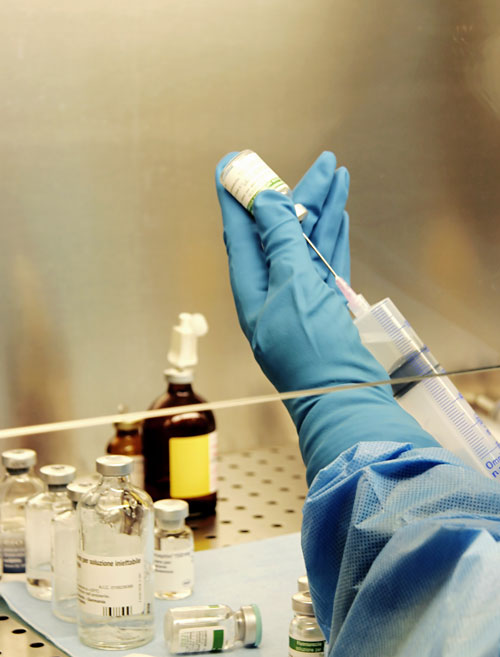USP 800 - Are You Ready?

6 years, 3 months ago

By Dan Culp
ASHE Certified Healthcare Engineer
For over a decade, pharmacies that compound medicines have been operating under the United States Pharmacopoeia (USP) 797, “Pharmaceutical Compounding Sterile Preparation” standards and USP 795, “Pharmaceutical Compounding Non-Sterile Preparation.”. In 2016 the USP Convention published Chapter 800 titled “Hazardous Drugs – Handling in Healthcare Settings” for peer review and public comment. This chapter sets new standards for the handling of hazardous drugs (HD) and is scheduled to become an official USP regulation December 1, 2019. The National Institute for Occupational Safety and Health (NIOSH) considers drugs hazardous if they exhibit one of the following characteristics in humans or animals: carcinogenicity, teratogenicity or developmental toxicity, reproductive toxicity, organ toxicity at low doses, genotoxicity, or structure and toxicity profiles of new drugs that mimic existing hazardous drugs. These drugs are listed in the NIOSH List of Antineoplastic and other Hazardous Drugs in Healthcare Settings 2016 (NOTE: A new version is anticipated in June 2019). Many healthcare organizations waited for the public comment period to conclude before making changes required by the new standards but are now finding they need to move forward quickly to meet the implementation deadline and are looking for answers. It is impossible to cover all of the complicated issues related to the USP 800 standards in this article, so we will address the main points.
USP 800 does not replace USP 797 (sterile compounding) or USP 795 (non-sterile compounding) but instead adds to the requirements of the current standards and, in some cases, supersedes them. Until now, there has not been an enforceable standard to protect pharmacists, nurses, doctors and other healthcare staff from the exposure to hazardous drugs especially when unboxing, storing, packaging and mixing of these drugs. USP 800 defines the responsibilities of personnel handling hazardous drugs, facility layout and air quality controls (containment), personal protective equipment (PPE), training, transportation, packaging for dispensing and disposal of hazardous drugs.
There are some things to consider when planning facility changes to meet USP 800:
Unpacking hazardous drugs (from external shipping containers) should not be done in a positive pressure space. Normally the general area of a pharmacy is a positive pressurized space. In addition, unpacking in the buffer area (compounding area) is prohibited by USP 800. Therefore, you need a negative pressurized space to unpack hazardous drugs unless they are contained in a sealed bag inside the shipping container.
Hazardous drugs must be stored in an externally ventilated, negative pressure room with at least 12 air changes per hour (ACH) and cannot be stored with non-hazardous drugs. Separate storage spaces for hazardous and non-hazardous drugs will be required. However, unpacking hazardous drugs can be done in the hazardous drug storage area.
The compounding or preparation of hazardous drugs must be separate from non-hazardous drug preparation areas and located in an externally ventilated, negatively pressurized room with a minimum of 12 ACH and a pressure differential of -0.01 to -0.03 inch water column. Sterile and non-sterile hazardous drugs can be compounded in the same room if that room maintains a constant ISO 7 cleanroom environment. Configuration of these rooms and anterooms can vary depending on your needs and available space.
The optimal design for a sterile HD compounding room (buffer room) would be a negative pressurized room meeting ISO 7 standards with 30 ACH and -0.01 inch water column pressure differential. Access to this room should be through a positive pressurized anteroom also meeting ISO 7 standards with 30 ACH and 0.02 inch water column pressure differential to all adjacent unclassified areas.
Many existing pharmacy facilities will need to make extensive changes to the mechanical systems that serve the compounding and storage areas. Creating negative air rooms for compounding and storage of hazardous drugs may require the installation of new exhaust ductwork to the roof which could significantly impact areas of the building above the pharmacy and will most likely include upgrading existing equipment to meet the airflow requirements.
There are many factors that go into designing and constructing the right space to meet the new standards. You may need professional help to develop the optimal space that meets your needs and spends your money wisely. Carl A. Nelson & Company is currently working on several USP 800 compliance projects and can guide you through this process to develop the best plan for your facility.
ABOUT THE AUTHOR
Dan Culp is a graduate of Iowa State University with a B.S. in Construction Engineering. Mr. Culp has a Healthcare Construction Certificate from the American Society of Healthcare Engineering. Dan has 28 years of construction experience. For more information, you may contact Dan at 319-754-8415.